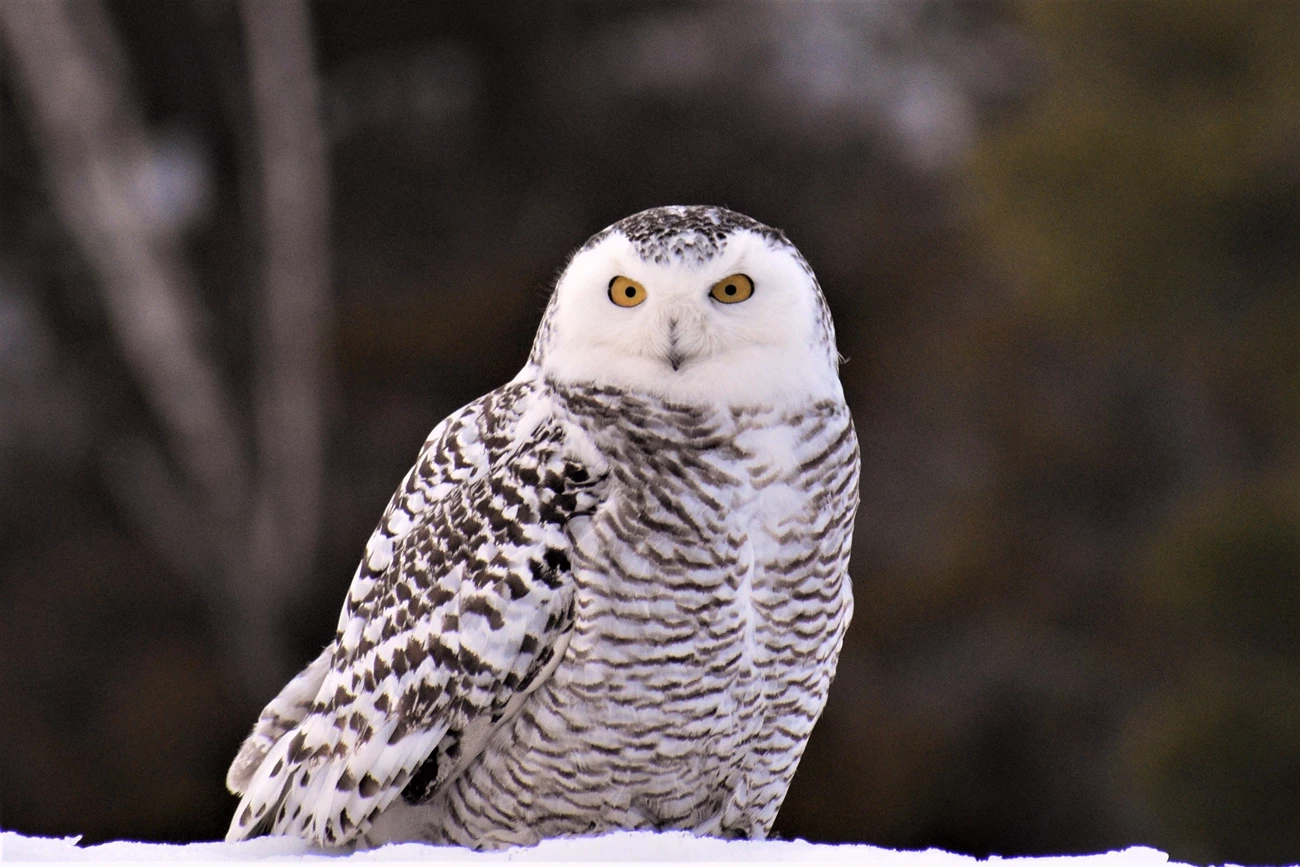
Gordy Lindgren Birdwatching AreasWhen hiking any trail visitors should remember many areas are covered in vegetation and they should be prepared for ticks, mosquitoes, and wet areas. 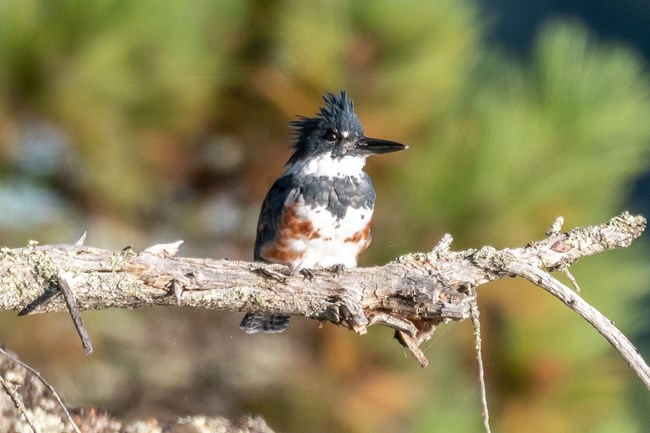
Robert Yone Anderson BayTo get to Anderson Bay, visitors will need to travel by boat from the Rainy Lake boat launch 22- miles to the Anderson Bay Trailhead. Navigational maps are highly recommended. The Anderson Bay Loop Trail traverses an elevated and glacially scoured pink granitic rock outcrop system. The rock is interspersed with a few beaver flowages, lowlands, wetlands, and a scenic drop to Peary Lake. The trail follows the high and open granitic knobs and ridges where jack, red, and white pines seemingly grow out of solid bare rock. The stands have little understory so one can easily see through them. Mosses and lichens form a shallow cover over the extensive outcrops. The soil is shallow but supports large areas of sweet fern, blueberry, wintergreen, bunchberry, and bearberry. Along the trail there are extensive vistas over Rainy and Peary Lakes and large, smooth, rounded glacial erratic rocks are strewn throughout the area. A northern portion of the trail follows the Rainy Lake shoreline for almost 1,312 feet. Twelve species of breeding warblers typical of coniferous boreal forests are heard here. Black-backed woodpeckers nest in cavities of the abundant fire dependent jack pine. Blue-headed vireos, pine warblers, ruby and golden-crowned kinglets, hermit thrushes and red-breasted nuthatches also breed in the conifers. White-throated sparrows and red-eyed vireos are common in the mixed forest areas. Echoing out of the more heavily forested coniferous areas is the sound of the winter wrens, brown creepers, and gray jays. 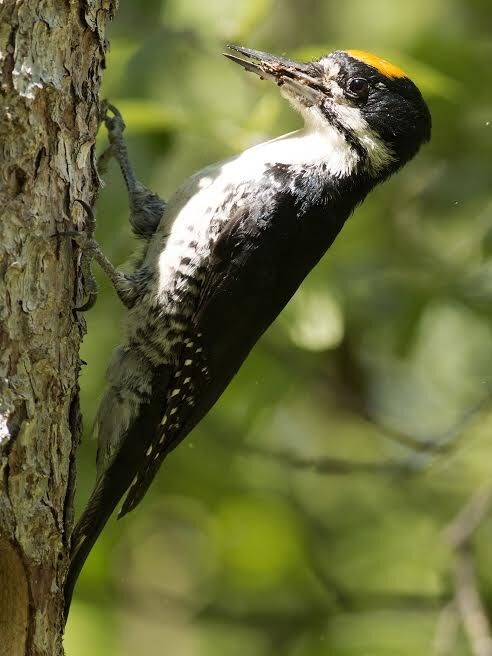
Dee Kuder Rainy Lake Visitor Center AreaTo get to the Rainy Lake Visitor Center area take Highway 11 East 10 miles to the entrance road. Turn right and travel two miles to the Rainy Lake Visitor Center. Bird monitoring in the Rainy Lake Visitor Center area has occurred long the two-mile entrance road, a portion of the Tilson Bay Connector Ski Trail, Oberholtzer Trail, around the visitor center grounds, at the marina, and at the picnic area along the shoreline. Northern spruce, fir, hardwood, shrub, herb rock barren, and boreal hardwood forest communities dominate the area. A few jack, red, and white pine areas are found as well. Black-backed woodpeckers are seen in the jack pine stands around the picnic area. The emphatic “What three beers” song of the olive-sided flycatcher is heard from a wet meadow and beaver pond area along the Tilson Trail. Scarlet tanager, least, and great-crested flycatchers are associated with mature and open hardwood stands. Bald eagles, osprey, and turkey vultures often soar, hover, and perch nearby. The “gunk-a-gunk, gunk-a-gunk” call of the bittern may lead to a view of the male standing in the midst of marsh cattails and grass near its nest along the Oberholtzer Trail. Warbler species seen around the visitor center are American redstart, Blackburnian, black and white, black-throated green, chestnut sided, Canada, common yellowthroat, magnolia, morning, Nashville, northern parula, ovenbird, pine, Tennessee, yellow, and yellow-rumped warblers. 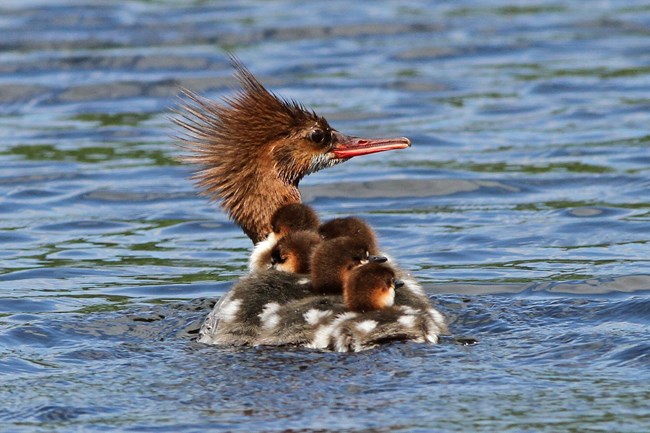
Scott Nagel Dryweed IslandTo get to the Dryweed Island area, visitors will need to travel by boat from the Rainy Lake boat launch 2.5 miles to the island. Navigational maps are highly recommended. Dryweed Island area is a 2.75-by-0.6-mile island in Rainy Lake, part of an ancient volcanic island arc system. Ridges up to 100 feet above the lake make up the core of the island. This island is the only island in the park with a forest breeding bird monitoring route. The route runs throughout the eastern part of Dryweed and requires bushwhacking about two miles. There are no formal park trails on Dryweed. Park users can bushwhack along the ridge tops in search of birds and berries. The high, dry ridges are covered with extensive mixed maturing, and open, jack, red and white pine forest. More dense spruce, fir, and cedar stands fill in more shady and moist areas. The birds are typical of conifer covered islands. Hermit and Swainson’s thrushes, ruby and golden Crowned kinglets, scarlet tanagers, blue-headed and red-eyed vireos, red-breasted nuthatches, pine, magnolia, morning, black and white, ovenbird, Blackburnian, black-throated green, Nashville and yellow-rumped warblers dwell on the ridges. Turkey vultures soar in the thermals over the ridges on still hot days. Common ravens can be seen and heard performing their aerial flights and acrobatics and making “kronking” and “kauluping” vocalizations. 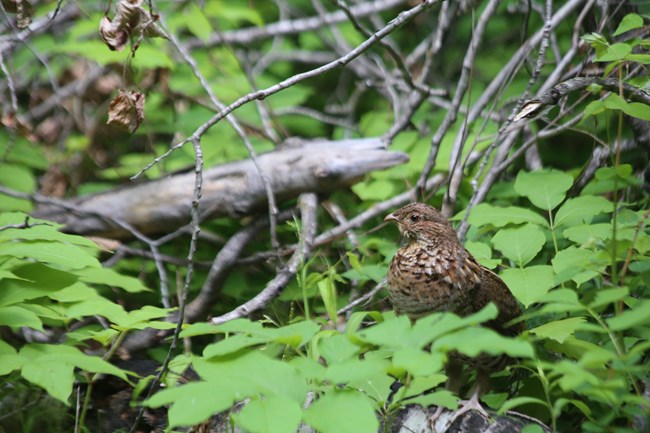
Kevin Hauser Black Bay Ski Trail AreaTo get to the Black Bay Ski Trail area, visitors will need to travel by boat from the Rainy Lake Visitor Center boat launch, one mile north to the trailhead. There are two trails in this area. The Black Bay Beaver Pond Trail and the Black Bay Ski Trail. Both trails extend through four forest communities. A northern bur oak community is open, high, dry, and south facing. Blueberries, junipers, and bearberry grow amongst the flat rocky outcrops. Chestnut-sided warblers, chipping sparrows, and indigo buntings nest there. Ruffed grouse forage on the many abundant berries. Veery, red-eyed vireo, white-throated sparrows, yellow-bellied sapsuckers, ovenbirds, and Nashville warblers are most frequently heard in the aspen/birch boreal conifer communities. Canada warblers are associated with mountain maple and other shrubs near moist areas. They are most common around and near the white-cedar and black ash lowland on the far east end of the trail where steep slopes are densely vegetated with shrubs. Red and white pine aspen and birch communities support blue-headed vireos, ovenbirds, Blackburnian, black-throated green, Nashville, and yellow-rumped warblers along with red-breasted nuthatches, and hermit and Swainson’s thrushes. Scarlet tanagers and wood pewees sing from the tops of the tall forest canopy there. 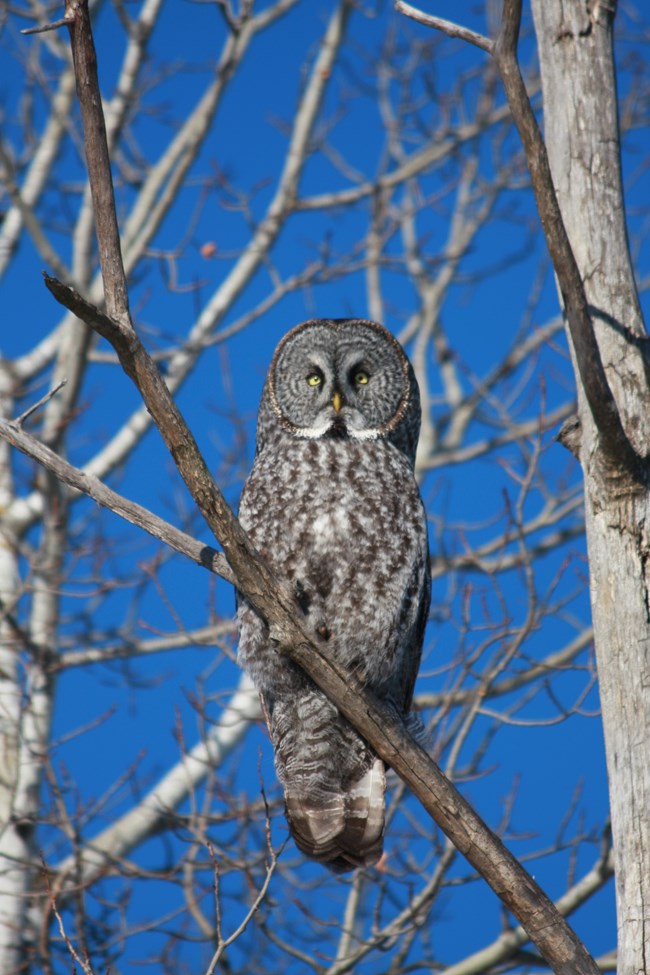
NPS Blind Ash Bay TrailThe Blind Ash Bay Trail originates from the upper parking lot and/or the Kabetogama Lake Overlook near the Ash River Visitor Center. The trail leads west 1.2 miles to a 0.7 mile loop around a peninsula surrounded by Kabetogama Lake on the north and Blind Ash Bay on the south. An overlook on the west end of the loop gives hikers a three mile view down the lake. Forest cover types in the area are mainly red and white pines interspersed with small areas of rocky woodlands and jack pine stands on the ridges. Aspen, birch, and upland spruce, fir, and aspen stands are distributed on lower uplands. Wetter draws are covered by a lowland hardwood forest. Species like hermit and Swainson’s thrushes, ruby and golden-crowned kinglets, scarlet tanagers, dark-eyed juncos, blue-headed and red-eyed vireos, and red-breasted nuthatches can be clearly visible near the tree tops. Sixteen warbler species seen on the trail are American redstart, Blackburnian, black and white, black-throated green, chestnut sided, Canada, common yellowthroat, magnolia, morning, Nashville, northern parula, northern water-thrush, ovenbird, pine, Tennessee, and yellow-rumped. Mature tree stands hold eastern wood pewee, great-crested flycatcher, scarlet tanager, and hairy and pileated woodpeckers. Songs of winter wren and least flycatcher are heard near the ground in wetter areas. 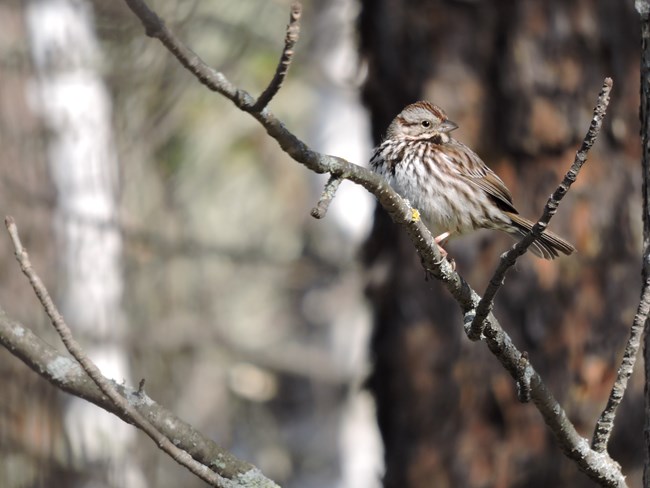
NPS Kab-Ash TrailTo get to the Kab-Ash Trail visitors enter from four locations along the Ash River Trail road or the visitor center road. Compasses and good topographical maps are a must on this trail system. The Kab-Ash Trail passes through some of the highest topography of the park. The glacially exposed granitic rock outcrops of the Vermilion Batholith form the backbone of the eastern portion of the trail from Ash River west over a series of long ridge systems south of Sullivan, Blind Ash, Nebraska, and Daley Bays of Kabetogama Lake. There are four loop systems that work the ridge tops. Much of the east portion of the trail supports jack, red and white pine communities mixed with northern bur oak stands. The trail goes through low areas where ridges sharply end only shortly to rise up on the next ridge. The gaps of lower areas are covered with spruce, fir, cedar stands, beaver ponds, and meadows. Birding is exciting at this trail because the forest is quite open along much of it. Species like hermit and Swainson’s thrushes, ruby and golden-crowned kinglets, scarlet tanagers, dark-eyed juncos, blue-headed and red-eyed vireos, red-breasted nuthatches, pine, Blackburnian, black-throated green, and yellow-rumped warblers can be clearly visible near the tree tops. When at the trail section near the Beaver Pond Overlook birders may view or hear tree swallows, eastern kingbirds common yellowthroat, swamp and song sparrows, red-winged blackbirds, pied-billed grebes, mallards, wood duck, blue-winged teal, ring-necked ducks, great blue herons, American bittern, sedge wren and possibly a sora rail. 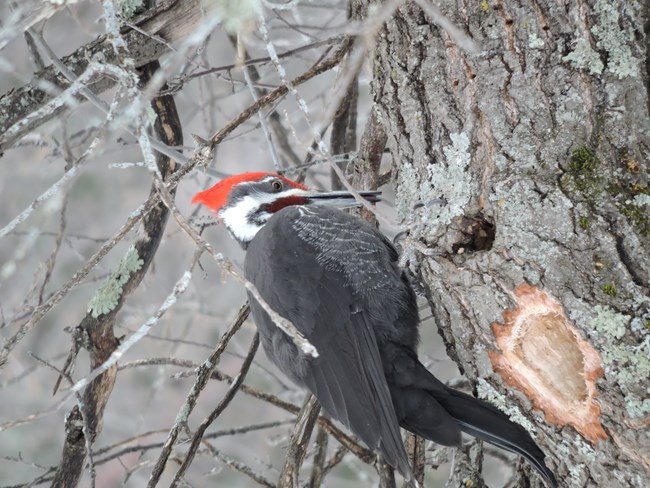
NPS Echo BayTo get to the Echo Bay Trail follow St. Louis County Road 122 North from U.S. Highway 53 to the Echo Bay trailhead signs. The Echo Bay Trail is a wide hiking and ski trail that crosses through aspen, birch, mature red and white pine, lowland hard wood, and mixed upland spruce and fir forest types. A large wetland was created by beavers in a live lowland ash stand that now has standing dead snags which support the park’s largest great blue heron rookery and some years an osprey nest. Heron nests can be seen from a high rocky overlook north of the pond and the trails edge northeast of the pond. A large bridge crosses a stream where one can hear northern water thrushes, brown creepers, Canada warblers, winter wrens and magnolia warblers. Least flycatchers are “chebeking” in the open understory The hammering voice of the swamp sparrow rings from the marsh while the rising raspy song of the northern parula emanates from the tree tops. A mature pine forest with rock outcrops and shallow soils occurs north of the bridge. Ruby and golden-crowned kinglets, Swainson’s and hermit thrushes, red-breasted nuthatches, yellow-rumped, Blackburnian, black-throated green, ovenbird, and more parula warblers sing here. Pileated woodpeckers frequent the dead snags throughout the area. A wet lowland hardwood forest skirts the west side of the beaver pond. On the southwest side of the trail the forest changes to upland hardwoods. Great-crested and least flycatchers, Baltimore orioles, scarlet tanagers, eastern wood pewees, American redstarts, red-eyed vireos, veery and chestnut-sided and morning warblers sing here. EthicsFeeding of birds and other wildlife is not allowed, as it may cause dependence on man as well as malnutrition. Nevertheless, some birds are thieves. Gray jays, also known as camp robbers, will do just that. Guard your sandwiches diligently when the Gray Jays are around. Ravens have been known to burglarize backpacks and bags of food left in the backs of trucks that are parked. Please be thoughtful in your bird watching. Approaching a nest too closely will scare off the parent, exposing the eggs or babies to predators. The use of calls, electronic or whistled by a human, to attract birds in the spring will draw males away from their duties of protecting the female on the nest. In the winter, the use of calls causes birds to expend precious energy unnecessarily as they investigate the source of the sound. Treating birds with respect will help assure that Voyageurs National Park remains a birdwatching paradise. |
Last updated: August 12, 2024
